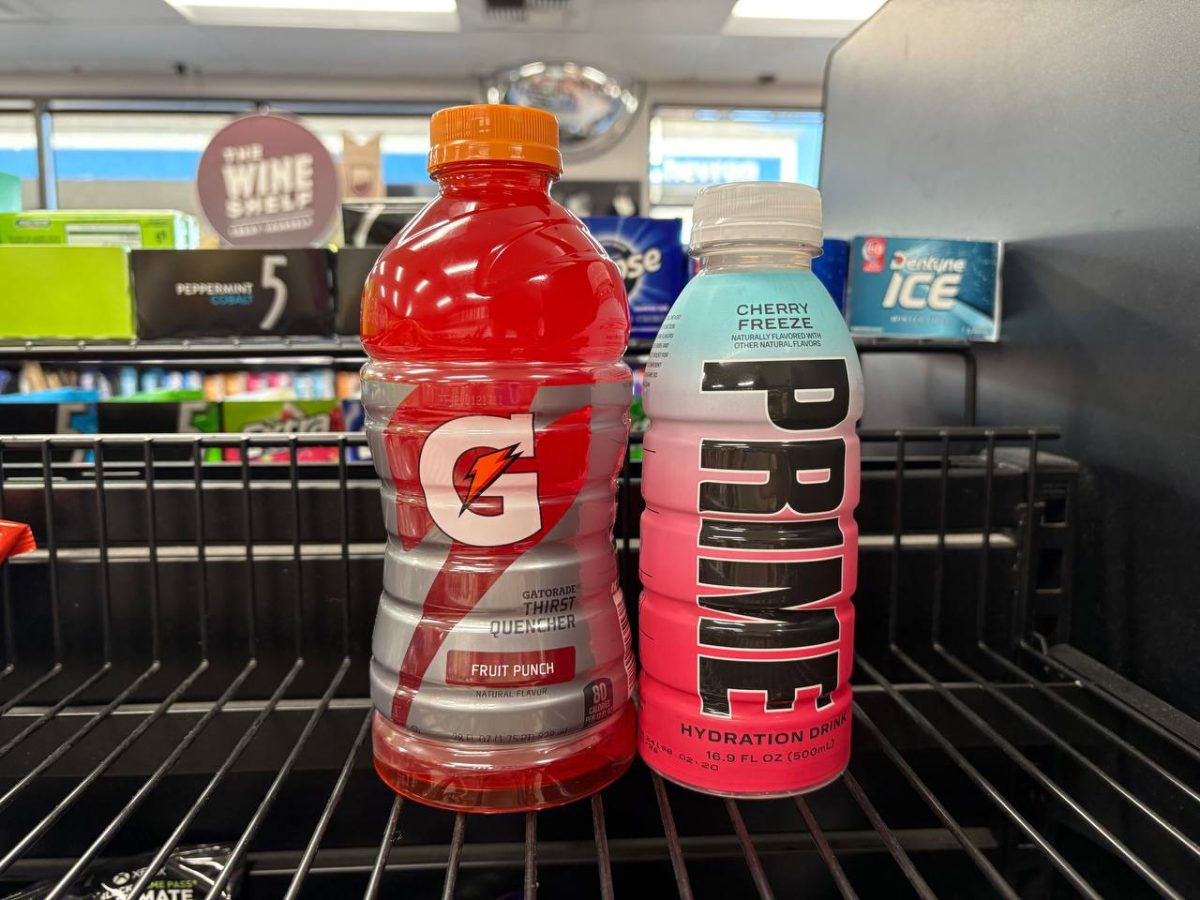While Depop offers a trendy haven for fashion-forward buyers and sellers to exchange unique finds, looking through its diverse listings comes with its own set of risks. However, it can be financially and sustainably beneficial.
With the recent interest in buying secondhand clothing, many companies have been creating apps to make thrifting from your phone easy. Depop, founded in London in 2011, is one of them.
According to Statista, “Depop’s revenue has more than doubled since 2019, reaching a total of 85 million in the last reported year. The Depop app consistently saw less than half a million downloads each month on the global level throughout all of 2022 and 2023.”
Buyers like Makena Lendahl, due to the recent increase in popularity, found out about Depop about a year ago. Finding cheaper alternative pieces to her favorite brands, Lendahl spent about $15 a month on items she found on people’s pages.
“I’ve bought a few tank tops and [BDG] shorts. I’ve bought a few Billabong swimsuits too,” Lendahl said.
Lendahl makes sure to check the seller’s profile first to see how many items they have sold and if their listing has a lot of pictures. If she finds that a profile only has one photo, she won’t buy from them. Lendahl has not been scammed, unlike Reza Brame who experienced being scammed for $80 JNCO jeans. When he initially purchased the pants, he believed everything was fine due to quick communication. But after about a week, he realized he had been scammed.
“I was able to message Depop and they gave me a refund on the item,” Brame said. “I would recommend that you be very careful about what and who you buy from and not just buy because it looks good.”
Depop is not unfamiliar with the idea of sellers not shipping items. On the Depop app or Depop.com under the “Help Centre,” “Buying” then “I haven’t received my item” tabs, their Buyer Protection policy is explained. There is even a red star by the link indicating that it is one of the most looked-for or clicked-on links in the “Help Centre.”
“We will help you get a full refund if you don’t receive your item – whether you get that through your PayPal dispute, or our internal Depop Payments process,” Depop said.
While there may be unreliable sellers on Depop, the app tries its best to be helpful and reliable. Though Depop takes a 10% fee off the seller, they make it easy for sellers by sending them a packing label to ship the item once it is sold. Sellers like Ryan McDaniel (@ryan_thrift via Depop) and Ara Cobres (@arasclosset via Depop) buy packaging from Amazon so they can drop it off at the United Postal Service (UPS) office to ship.
“It’s $12 for 100 [poly mailers],” Cobres said. “I use that and then I can package it with stickers.”
McDaniel has used this app to his advantage and made profits by listing extra clothes that he didn’t wear that he got thrifting. His presence on the app has increased as he’s taken more interest in finding his style.
“I think on [a monthly] average, [I make] around $700 or $800, but a lot of that I’m having to spend on buying clothes too,” McDaniel said. “But I think I’ve made $4000 [in total] since October [2023].”
While Depop helps people to make extra cash off clothes they no longer find use for, to sellers like McDaniel, it is not a steady form of income.
“I work at Abercrombie [and Fitch] so it’s not [my only source of income], but if you’re not already going thrifting, then [selling is] probably not worth it,” McDaniel said. “But I’m already going to buy stuff for myself anyway.”
Depop was originally intended to be a way to spread ideas about fashion trends and provide buyers with affordable clothing options. While not all sellers are trustworthy and buyers are not always consistent, this app stays consistent in allowing people to find a style that suits them.
“Most people on Depop are friendly and they’ll communicate with you,” Cobres said. “The only thing is, trying to communicate with sellers [about] buy[ing] something, sometimes they don’t respond.”
by ALEXIS DASHNYAM & RILEY RUST










